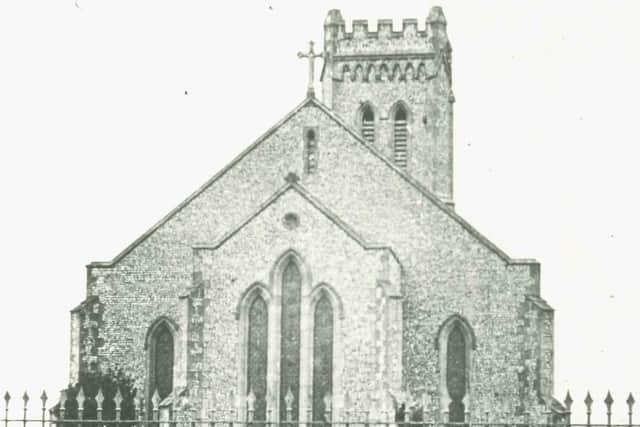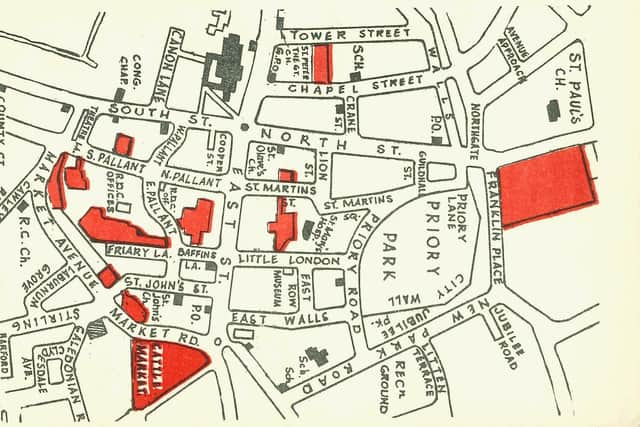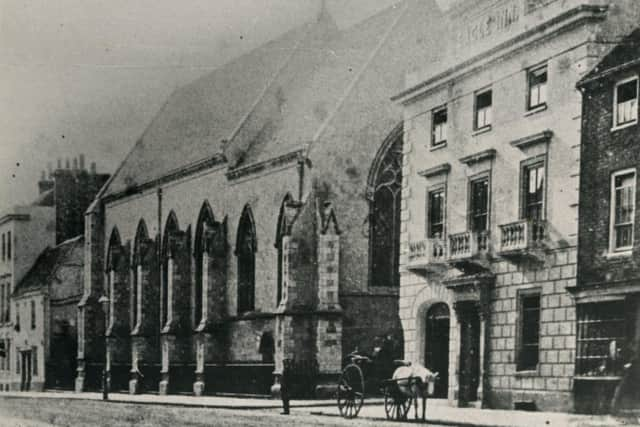Chichester history: Over 185 years of St Paul’s Church


Due to a growing population in 1831 and a subsequent lack of space for worship in the parish of St Peter the Great, West Street, St Paul’s parish was created.
St Paul’s Church was consecrated a few years later on October 13, 1836. The Rev Dr William Otter, who had been appointed as Bishop of Chichester on the same day, went to St Paul’s to begin the consecration service at 11 o’clock. The Rev Thomas Browne MA was appointed as minister and led the first Morning Prayer.
Advertisement
Hide AdAdvertisement
Hide AdJoseph Butler was appointed to design the church. This was no easy task. He was working during a time of transition between two major recognised architectural styles – the classicism of the Georgian period and the full-scale Gothic revival that would follow in the Victorian era.


Also in the news: Bernard Cribbins: This is when he visited Chichester Festival Theatre and why he was such an important star of stage and screen
The building was constructed with semi-knapped flint and originally had a tower. Some sketches show that at one point, the idea was to have four tall pinnacles at each corner of the tower but when it was built, only one crenellated parapet was constructed.


Advertisement
Hide AdAdvertisement
Hide AdSadly, the tower was demolished in 1950 due to structural instability. The original organ had 753 pipes and was ‘housed in a Gothic case made of pine’. It was replaced in 1874 with a larger Hunter organ.
The Rev Thomas Browne was minister at St Paul’s from 1836 to 1878. He supported the West Sussex, East Hampshire and Chichester Infirmary, later known as the Royal West Sussex Hospital, and established the Hospital Sunday collection in 1870 to raise money for the Infirmary.
Later, in 1879, the new vicar, John Frederick Maul, removed the rented pew system that had been in place since the church’s first service in order to make attendance accessible for poorer members.
St Paul’s ran many outreach programmes during the latter part of the 19th century. One example was that run by two Anglican nuns from the Convent of St Margaret at East Grinstead.
Advertisement
Hide AdAdvertisement
Hide AdThey came to the parish in 1889 and worked with the poor in Somerstown. They also set up a mothers’ meeting and night school for boys and young men.
During World War Two, the parish room and St Michael’s Hall were offered to the education authority as a school space for evacuated pupils and staff.
The cellars of the vicarage were converted into an air raid shelter in 1940 and a war memorial for World War Two now hangs in the north-west corner of the church, designed by Miss May Wilkins and made of oak.
Come 1953, Chichester was found to have slightly too many churches for congregation sizes, so ‘The Great Reorganisation’ of churches took place.
Advertisement
Hide AdAdvertisement
Hide AdSt Paul’s saw the size of the parish reduced. Later, in 1959, St Paul’s was amalgamated with St Bartholomew’s, located in Westgate, Chichester.
St Bartholomew’s ceased to be used as a parish church but was for many years utilised by the then Chichester Theological College.
In 1966, Deaconess D.G. Heath joined the churches’ staff, becoming the first woman to work at St Paul’s.
Additionally, in 1969, low attendance in the choir meant places were opened to girls as well as boys.
Advertisement
Hide AdAdvertisement
Hide AdIn 1974, the Northgate Gyratory System was built, sacrificing part of St Paul’s graveyard, after much debate and protest from the vicar.
Most of the graves had to be exhumed but one, that of the Chichester poet Charles Crocker, whose gravestone can still be seen near the east end of the church today, was spared.
While the churchyard was no longer quiet, the church itself was now much more visible to anyone driving past.
In the 1970s, the once separated parishes of St Peter the Great and St Paul’s were reunited. Despite St Peter the Great having a thriving congregation, the building itself was in a poor state of repair and unsustainable as a place of worship.
Advertisement
Hide AdAdvertisement
Hide AdThe vicar, John Jackson, was approached about the merger in 1977 but it was not until July 6, 1980, that the two congregations were reunited once again.
The 150th anniversary of the consecration of St Paul’s occurred in 1986. Celebrations lasted throughout the year, concluding on October 13, the actual anniversary date, with the congregation and choir gathering in the church itself to honour its founders.
At the end of the 20th century, St Paul’s congregation had to move temporarily to Bishop Otter College as major reordering works were underway at the church. The work took longer than anticipated and the congregation had to wait until April 16, 2000 – the first Palm Sunday of the new millennium – to return.
More recently, in 2005, St Paul’s played host to the choir and organist of the Paul Gerhardt Church in Berlin. It was reported to be an amazing night, with Berlin organist Jörg Walter improvising on St Paul’s organ and wowing listeners.
Advertisement
Hide AdAdvertisement
Hide AdIn 2010, the majority of St Paul’s own choir made a return visit to Germany, singing at a concert on the Saturday night and a Eucharist on the Sunday morning.
St Paul’s has a long, rich and varied history, full of community and the ability to overcome any hardship.
No doubt the church will continue to adapt and thrive well into the rest of the 2020s and far beyond.
• This article has been written in conjunction with The Novium Museum, which supplies a monthly feature for the Chichester Observer’s Retro page. The award-winning museum is in the heart of the city centre and opening Tuesday to Friday 10am to 4:30pm, Saturday 10am to 5pm, Sunday 10am to 4pm.
